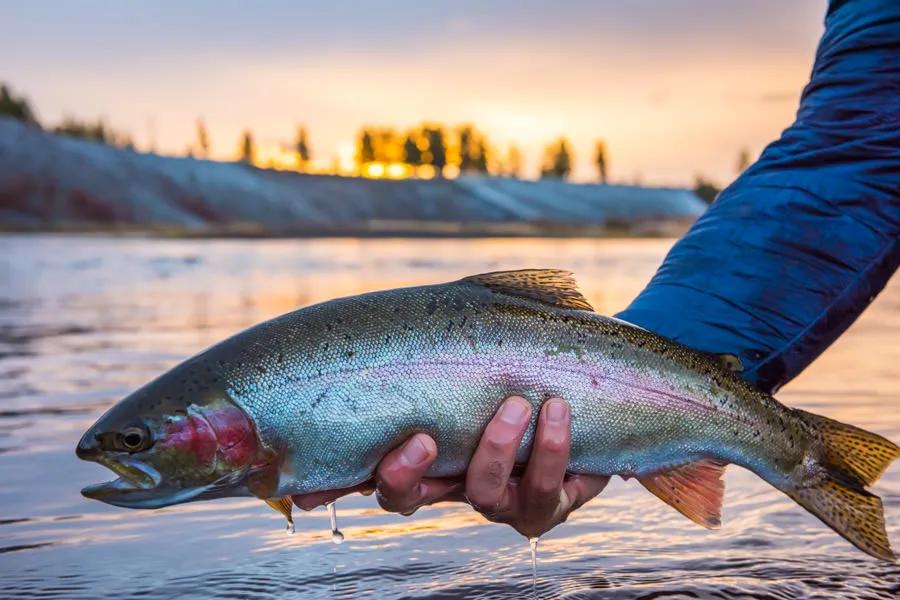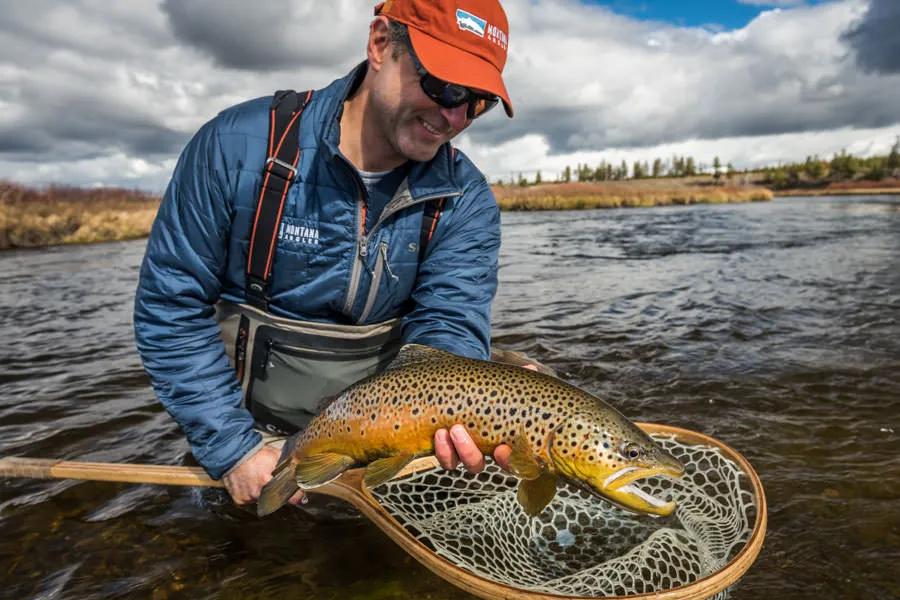
Labor Day is the unofficial start of the fall season here in Montana. As the nights grow longer and the days shorter, anglers in Montana are eager for the change from warm summer days to crisp mornings and golden sunsets. The fall fishing season in Montana provides anglers with a variety of waters to fish and even greater opportunities of ways to fish them. Whether you enjoy fishing a large tailwater river like the Missouri River or an intimate small creek, a fly fishing trip in Montana in the fall is a unique contrast to the more popular and well-known summer season. For floating anglers, our large rivers like the Yellowstone and Madison Rivers serve up a mix of hatches and the possibility of great streamer fishing. For anglers who like to explore on foot, the Paradise Valley Spring Creeks and Yellowstone National Park offer both challenges and opportunities. Here are Five Great Montana Rivers to Fish This Fall.
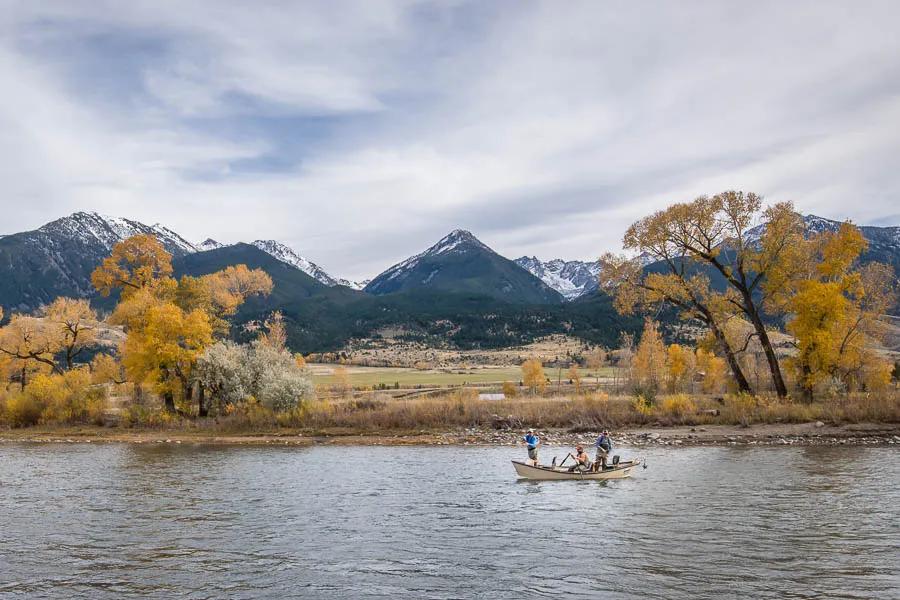
The Yellowstone River is arguably the favorite local river near Bozeman for fall fishing. With well over 100 miles of fishable water and known for producing trophy-sized brown trout, a fall fly fishing trip in Montana should include the Yellowstone River. The river's scenic backdrop exists of mountain peaks that can be dusted with snow if a high-elevation cold front passes. Flanked by the golden leaves of changing cottonwoods, the river flows through Paradise Valley and in the Yellowstone River Valley downstream from Livingston all the way to Billings. For many anglers, targeting brown trout in the fall is the goal. Brown trout are fall spawners and the largest fish in the river let their guard down as they become preoccupied with reproductive activities. Casting large streamers on cloudy fall days can produce some heart stopping strikes from trophy sized fish. Fall is also a great time to cast dry flies. The fall mayfly hatches encourages pods of rainbows to sip the small mayflies out of current seams and eddies. With few other anglers on the water and productive fishing, the fall season on the Yellowstone River is one of Montana's must-have fly fishing trips.
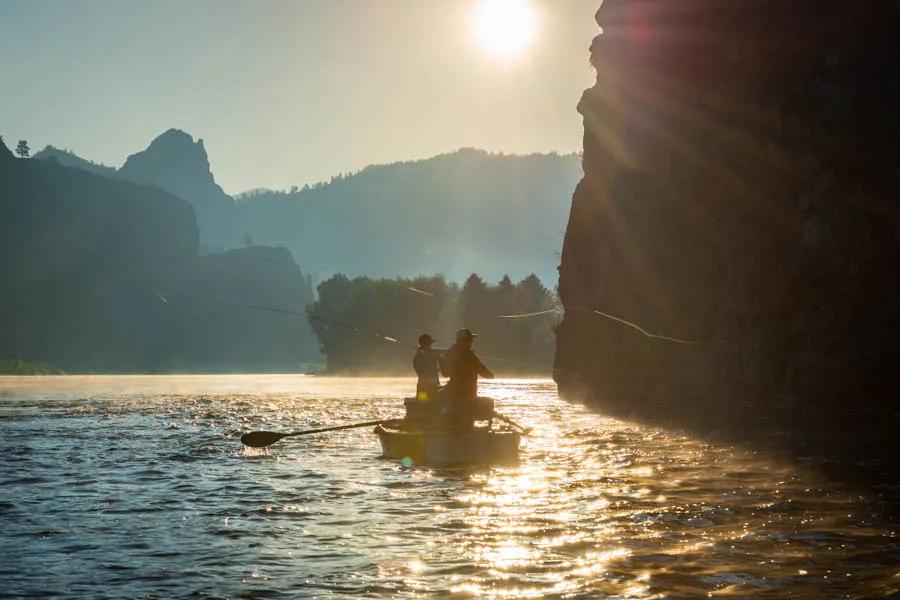
Beginning when the Gallatin, Madison, and Jefferson Rivers combine west of Bozeman, the mighty Missouri River averages well over 6,000 trout per mile. After the long, hot days of summer transition to the comfortable and mellow weather days of fall, local anglers on the Missouri River are rejuvenated and ready to fish this central-Montana tailwater. Hatches of Blue Winged Olives are consistent on the river downstream from Wolf Creek all the way to Cascade. By mid-September the aquatic, pelagic weed growth from late summer dies and streamer anglers are rewarded with opportunities to fish the variety of predatory trout habitat that exists on the Missouri River--bankside structure, drop-offs below shelfs, long shallow flats, and undercut banks. Dry fly anglers can also enjoy the region's most reliable October caddis hatches. To learn more about the exciting fall fishing, read about the Missouri River in September and the Missouri River in October.
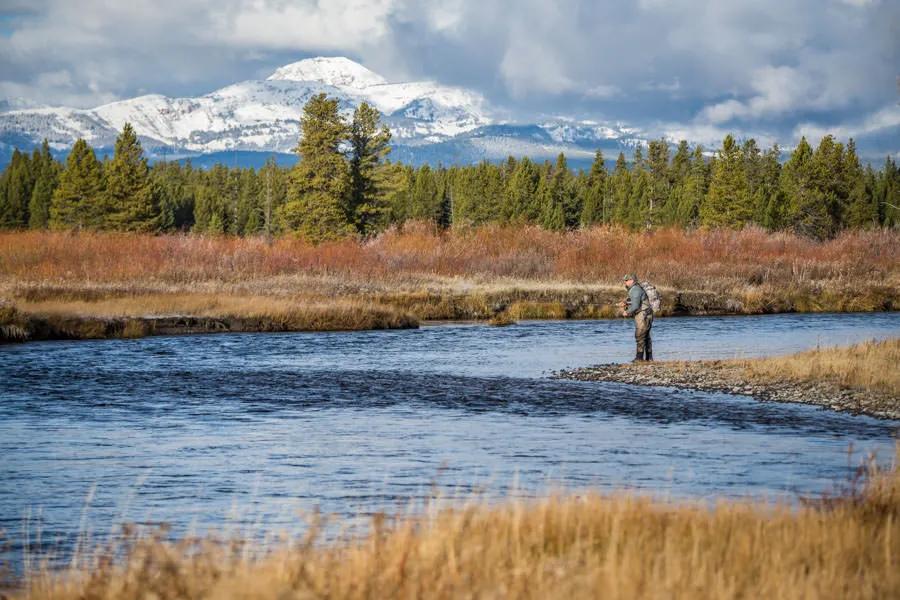
Montana's Madison River begins in Yellowstone National Park and then flows for nearly 50 miles through the Madison River valley. From its origin all the way downstream to the western town of Ennis, the Madison River is one of Montana's most famous rivers. Much of this reputation is earned because of the exceptional fall fishing on the river. Dry fly anglers will find hatches of Blue Winged Olives and hungry fish picking off the small mayflies even in the river's fast currents. Streamer anglers pursue legit trophy fish all throughout the river, but especially in Yellowstone National Park. Throughout the river the browns are colored up and aggressive and this is a great time of the year to target huge trout. Blue Winged Olives can produce good dry fly fishing on cloudy days. Streamer fishing also becomes very productive. On sunny days the hopper fishing can hold out into early October.
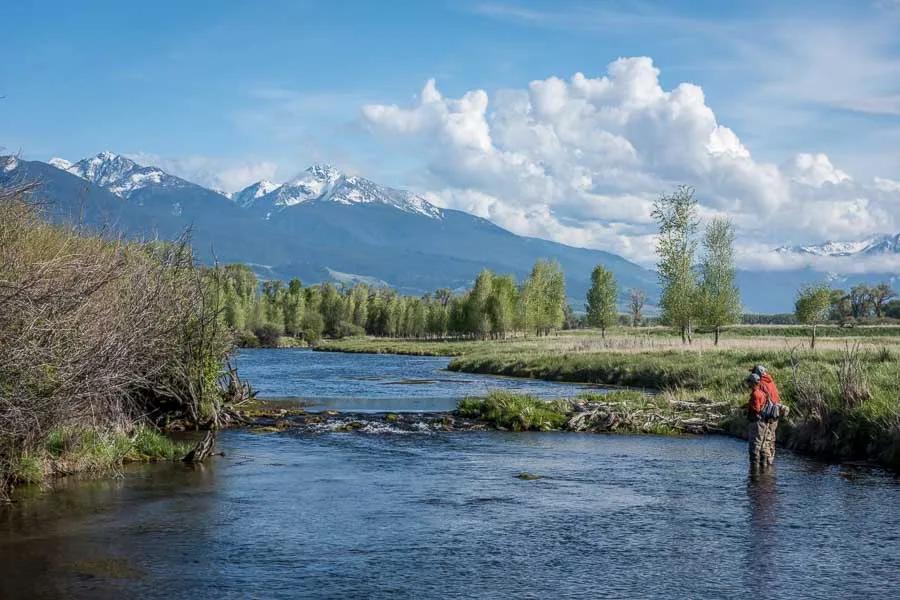
Flanked by the mountain peaks of Paradise Valley, DePuy's and Armstrong's Spring Creeks are one of the most unique fall fly fishing experiences in all of Montana. Emerging as a natural spring directly from the ground, the water remains a consistent temperature 365 days a year. During the fall the consistent water temperature means there are regular hatches of Blue Winged Olives, midges, and a few other small mayfly species. Additionally, on the often rainy or drizzly overcast days of fall, hatches of Blue Winged Olives can be prolific. The challenge of fly fishing the spring creeks in the fall are large part of the appeal. A typical fall day of fly fishing on DePuy’s or Armstrong’s spring creeks often begins fishing a shallow-water, sight-fishing nymph rig with size 18 or 22 midge or mayfly nymphs. Long leaders of 12- to 15-feet are best, tapered to 5X or 6X fluorocarbon tippets. A tandem, shallow water rig on a 12- or 15-foot leader tapered to 5X or 6X fluorocarbon with a size 18 or 20 scud, sowbug or midge can produce fish. Most experienced spring creek anglers use small yarn or light pinch-on indicators and small size—6 to 12—split shot. Because most currents on the spring creeks run slower than larger rivers, less weight and shorter depths from fly to indicator are essential.
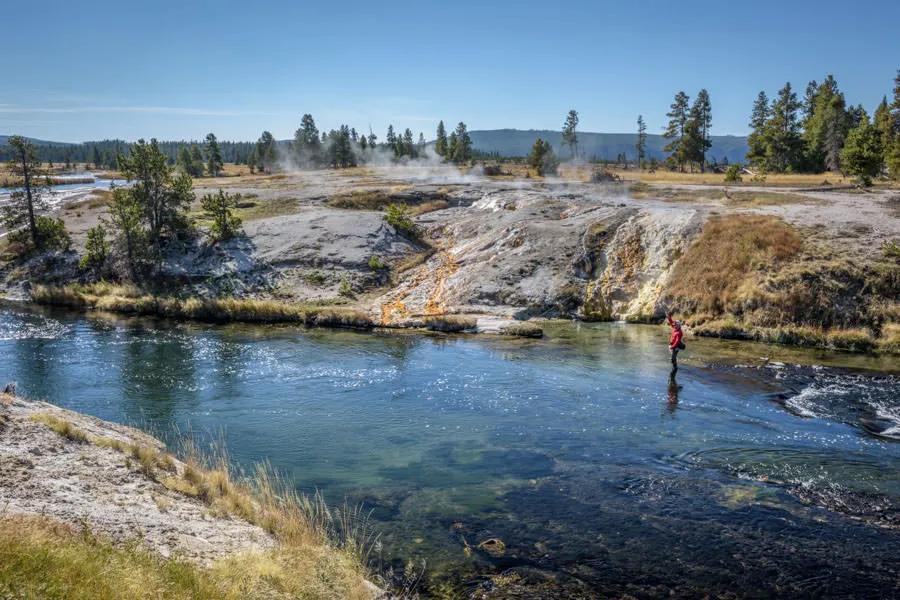
Any article about fly fishing in Montana in the fall would be incomplete if it didn't mention the fishing options in Yellowstone National Park in the fall. With the famous waters of the Firehole, Gibbon, and Madison Rivers flowing through Yellowstone National Park's geyser basins and the backcountry angling opportunities of Slough Creek, Soda Butte Creek, the Lamar River, and the Black Canyon of the Yellowstone River, a fly fishing trip to Montana in the fall should include Yellowstone National Park. Throw in the potential for a trophy-sized fish in the Lewis River channel and there really is something for all interests and all skill levels when fly fishing Yellowstone National Park in the fall. When considering a fall trip always plan appropriately as weather and conditions can and do change quickly. It is best to pack for all types of weather--including blizzard-like conditions--even in early September. Consult our fly fishing reports or inquire locally when planning a fall fly fishing trip to Yellowstone.
Labor Day is the time to get serious about a fall fly fishing trip in Montana. As football season starts and baseball games actually matter, the fishing actions kicks into an extra gear for the next few months. This time of year anglers often mix in a lot of float assist fishing where they float fish but also get out and wade a lot of the prime spots to hit runs with higher concentrations of fish. The lake fishing also gets good when callibaetis mayflies begin hatching on Ennis and Hebgen Lakes, as well as some private reservoirs providing sight fishing opportunities to very large trout. Dry fly fishing is often very good. Some very big fish succumb to both hoppers as well as sub surface sculpins in the fall. September sees more anglers than October and as the calendar gets deeper into October, the rivers are less busy because lots of locals are chasing hoofed critters in the hills and the tourists have gone home for the summer. This is a beautiful time to fish with snow on the peaks and yellow leaves on the aspens and cottonwoods.
